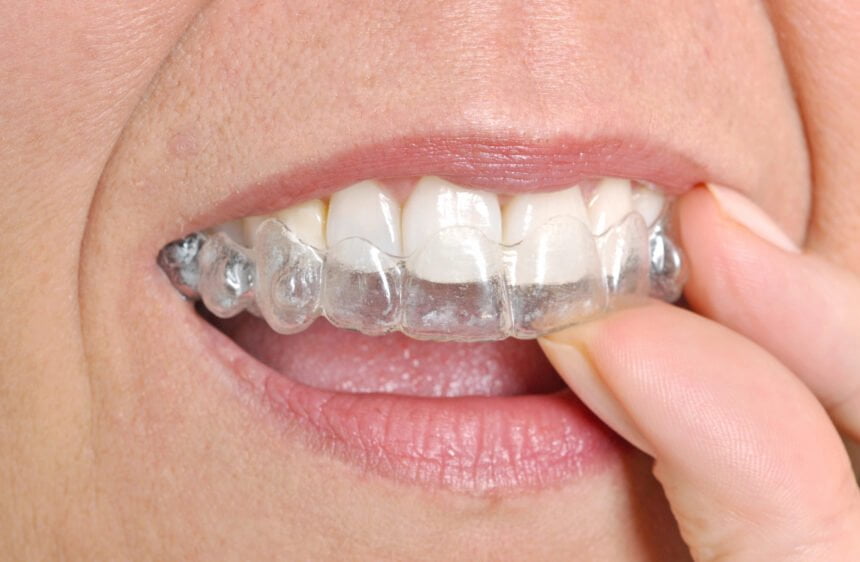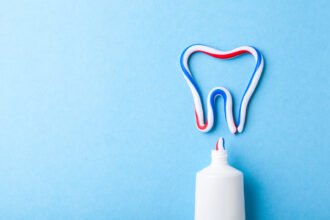Orthodontic care offers a lot of important health benefits, which include helping people with cosmetic issues and improving their oral health. An estimated 1.61 million adults got orthodontic care in 2018. Many children also need orthodontic care to correct underbites, overbites and other tooth problems.
- What Is Invisalign?
- How Invisalign Differs from Traditional Braces
- Benefits of Using Invisalign
- The Invisalign Process
- Benefits of Invisalign
- Invisalign vs. Braces
- Is Invisalign Right for You?
- Types of Orthodontic Issues Invisalign Can Address
- Limitations and Considerations
- Frequently Asked Questions (FAQs)
- Conclusion
Orthodontic treatments have come a long way from the days of clunky metal braces and restrictive diets. Today, there are more advanced and aesthetically pleasing options available for those seeking to perfect their smiles. Among these modern solutions, Invisalign stands out as a revolutionary approach to teeth alignment.
Invisalign offers a clear, convenient, and comfortable alternative to traditional braces, making it an increasingly popular choice for both teens and adults. This comprehensive guide aims to provide you with all the information you need about Invisalign treatment, from how it works to its numerous benefits and how it compares to traditional braces.
Whether you’re considering orthodontic treatment for the first time or looking to switch from braces, this guide will help you make an informed decision about your dental health.
Let’s dive in and explore everything you need to know about Invisalign, the innovative path to a straighter, more confident smile.
What Is Invisalign?
Invisalign is a cutting-edge orthodontic treatment designed to straighten teeth using a series of custom-made, clear plastic aligners. Unlike traditional braces, which rely on metal brackets and wires, Invisalign aligners are virtually invisible, offering a discreet way to achieve a perfect smile.
How Invisalign Differs from Traditional Braces
- Appearance: Invisalign aligners are made from clear plastic, making them almost invisible when worn. This contrasts sharply with the noticeable metal brackets and wires of traditional braces.
- Comfort: The smooth plastic of Invisalign aligners is gentle on the gums and cheeks, unlike the metal components of braces that can irritate.
- Convenience: Invisalign aligners are removable, allowing you to eat, drink, brush, and floss without any special tools or restrictions. This feature also makes it easier to maintain oral hygiene compared to traditional braces.
Benefits of Using Invisalign
- Aesthetic Appeal: The primary advantage of Invisalign is its near invisibility. This makes it an attractive option for adults and teenagers who are self-conscious about wearing braces.
- Improved Oral Health: With the ability to remove the aligners, patients can maintain better oral hygiene, reducing the risk of cavities and gum disease often associated with traditional braces.
- Custom Fit: Each set of aligners is custom-made to fit the patient’s teeth perfectly, ensuring a comfortable and effective treatment.
The Invisalign Process
Initial Consultation and Assessment
The journey to a straighter smile with Invisalign begins with a consultation with a certified orthodontist. During this visit, the orthodontist will evaluate your teeth and discuss your orthodontic needs and goals. If Invisalign is deemed suitable for your case, a detailed treatment plan will be created.
Customising the Aligners Using 3D Imaging Technology
One of the standout features of Invisalign is its use of advanced 3D imaging technology. This technology allows the orthodontist to create a precise digital model of your teeth. Using this model, a series of custom aligners will be designed to move your teeth into their desired positions gradually.
Treatment Plan and Timeline
The treatment plan outlines the expected duration of the Invisalign process, typically ranging from 12 to 18 months, depending on the complexity of your case. You’ll receive a new set of aligners approximately every two weeks, with each set designed to make slight adjustments to the position of your teeth.
Wearing the Aligners: Daily Routine and Maintenance
For the best results, Invisalign aligners should be worn for 20 to 22 hours per day, only removing them for eating, drinking (except water), brushing, and flossing. Keeping the aligners clean is straightforward; simply rinse them with lukewarm water and brush them gently. Maintaining this routine ensures the aligners remain clear and effective throughout the treatment.
Invisalign offers a modern, flexible, and comfortable approach to orthodontic treatment, making it an excellent choice for those seeking an alternative to traditional braces. By understanding the process and committing to the treatment plan, patients can look forward to achieving a beautifully aligned smile with ease.
Benefits of Invisalign
Aesthetic Advantages
Invisalign aligners are virtually invisible, making them an incredibly attractive option for those who are concerned about the aesthetic impact of traditional braces. The clear aligners blend seamlessly with your natural teeth, allowing you to smile confidently throughout the treatment.
Comfort and Convenience
The smooth plastic of Invisalign aligners is remarkably comfortable, eliminating the irritation often caused by metal braces. Additionally, the aligners are easily removable, providing unmatched convenience for eating, drinking, brushing, and flossing. This means you can maintain your usual diet and oral hygiene routine without any significant changes.
Shorter Treatment Duration
Invisalign can achieve stunning results in a shorter time frame compared to traditional braces. The treatment typically lasts between 12 to 18 months, depending on the complexity of your case. This faster timeline means you can enjoy your beautifully aligned smile sooner.
Invisalign vs. Braces
Aesthetic Considerations
Invisalign aligners are nearly invisible, offering a sleek, discreet solution for teeth straightening. This is especially appealing for adults and teenagers who might feel self-conscious about the noticeable appearance of metal braces. While traditional braces can now be made from less conspicuous materials, they still remain more visible than Invisalign.
Treatment Flexibility and Discipline
Invisalign’s removability provides extraordinary flexibility, allowing you to enjoy your favourite foods and maintain excellent oral hygiene effortlessly. However, this flexibility requires disciplined wear, as the aligners need to be worn for 20 to 22 hours daily to be effective. Traditional braces, being fixed, eliminate the need for this level of discipline but impose dietary restrictions to avoid damaging the braces.
Duration and Complexity of Treatment
Invisalign generally offers a shorter treatment duration, typically ranging from 12 to 18 months. It is ideal for addressing mild to moderate orthodontic issues
Is Invisalign Right for You?
Ideal Candidates for Invisalign
- Mild to Moderate Misalignments: Invisalign is particularly effective for correcting issues such as overcrowding, gaps between teeth, and certain bite problems.
- Teens and Adults: Suitable for both teenagers and adults who can commit to wearing the aligners for the recommended hours each day.
Types of Orthodontic Issues Invisalign Can Address
- Overcrowded Teeth: When there isn’t enough space in the jaw for all the teeth to fit normally.
- Gapped Teeth: Spaces or gaps between teeth, which can occur due to an abnormal continued growth of the jawbone or missing teeth.
- Crossbites, Overbites, and Underbites: Invisalign can correct certain bite issues, though more severe cases might require traditional braces.
Limitations and Considerations
- Discipline Required: Success with Invisalign requires wearing the aligners for 20 to 22 hours per day. Non-compliance can prolong treatment.
- Complex Cases: Severe orthodontic issues or specific types of tooth movements may be better suited to traditional braces.
Frequently Asked Questions (FAQs)
Can I Eat and Drink with Invisalign Aligners In?
No, aligners should be removed before eating or drinking anything other than water to avoid staining and damaging the aligners.
How Often Will I Need to Visit the Orthodontist During Invisalign Treatment?
Patients typically visit their orthodontist every 6 to 8 weeks to ensure the treatment is progressing as planned and to receive new sets of aligners.
Is Invisalign Painful?
While Invisalign aligners are generally more comfortable than traditional braces, you may experience mild discomfort or pressure for a few days after switching to a new set of aligners, which is a normal sign that the aligners are working to move your teeth.
How Do I Clean My Invisalign Aligners?
Aligners can be cleaned by brushing them gently with a toothbrush and lukewarm water. Avoid using hot water as it can warp the plastic. There are also special cleaning crystals and solutions designed for Invisalign aligners.
Will Invisalign Affect My Speech?
Some people may experience a slight lisp for a few days when they first start wearing Invisalign aligners. This is usually temporary and your speech should return to normal as you get used to the aligners.
Are There Any Food Restrictions with Invisalign?
No, one of the benefits of Invisalign is that you can remove the aligners to eat, so there are no food restrictions. However, you should maintain good oral hygiene by brushing your teeth before reinserting the aligners.
Conclusion
Choosing to straighten your teeth is a significant decision that can have a lasting impact on your confidence and overall oral health. Invisalign offers a modern, comfortable, and aesthetically pleasing alternative to traditional braces, making it an excellent option for many individuals.
With its nearly invisible aligners, custom fit, and the convenience of being removable, Invisalign stands out as a preferred choice for those looking to improve their smile without the noticeable appearance of metal braces. However, the success of Invisalign treatment depends on your commitment to wearing the aligners as recommended and maintaining good oral hygiene.
While Invisalign treatment is suitable for many orthodontic issues, it’s essential to consult with a qualified orthodontist to determine the best treatment option for your specific needs. As WebMD states in this article, it is never too late to get them.
A professional evaluation will help you understand the intricacies of your dental condition and the most effective approach to achieving a beautifully aligned smile.










